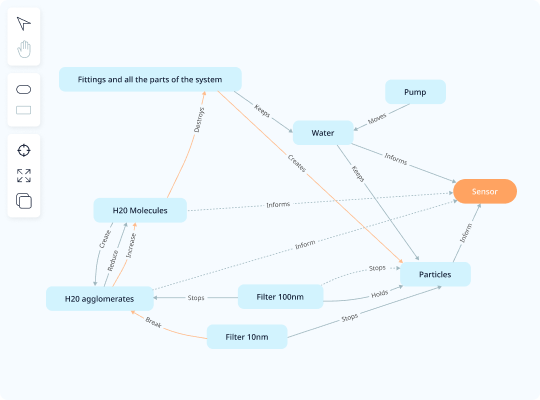creative tool

System Functional Model, also known as Function Modeling, is a popular problem-solving tool that helps us to model a problem using functional language and identify problematic and functional components. Functional modeling helps us to think within the scope of components and their functions instead of the system as a whole.

As part of many problem-solving projects, it is extremely important to understand the functional interactions between different components of the systems that you are analyzing. Functional modeling allows us to quickly describe and map the functionality of all components contributing to the final product or service of that system. The functional modeling tool is applicable to both sudden unpredictable deviations (also known as excursions) and solving chronic problems for consistent improvements.
Among many cases when Functional Modeling is useful for us as problem solvers and innovators, we want to highlight just a few:
Functional modeling offers several distinct advantages for problem solvers and innovators. By breaking down complex systems into manageable components, it allows for a more granular analysis of each part’s role and effectiveness. This methodical approach makes it easier to identify inefficiencies and opportunities for improvement. Additionally, functional modeling promotes a deeper understanding of the interplay between various system components, which is crucial for developing robust solutions.
Functional modeling is versatile and can be applied across various industries. For instance, in manufacturing, it can help identify which machinery or processes are most critical to production and where bottlenecks occur. In software development, functional modeling can pinpoint which modules or features are causing performance issues. By addressing these specific areas, organizations can streamline operations, reduce costs, and enhance overall product quality.
To dive deeper into the principles and applications of functional modeling, visit our comprehensive guide on functional modeling. This resource provides detailed insights, practical examples, and expert tips to help you master this powerful problem-solving tool. Whether you’re dealing with sudden deviations or chronic issues, functional modeling can equip you with the strategies needed for effective analysis and resolution.
By understanding and leveraging the capabilities of functional modeling, you can transform the way you approach problem-solving, leading to more innovative and efficient solutions.